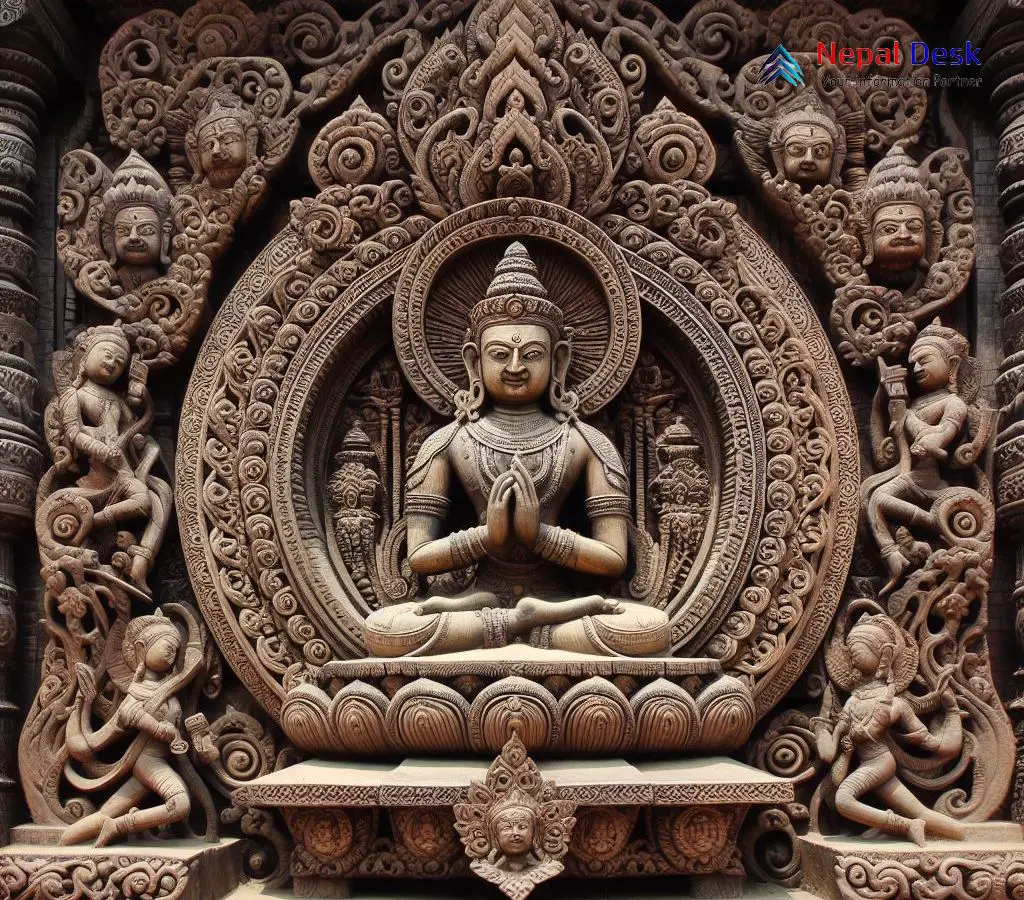Nepal's Cultural Renaissance: Reclaiming Stolen Treasures
Published Date

Published Date
Nepal witnesses a symbolic return of stolen cultural relics, reflecting a global movement to restore Asian and African heritage to ancestral lands.
⏱ 5 min read
Introducing a renaissance of its erstwhile divine heritage, Nepal is experiencing the return of many statues that were long taken away to foreign lands, which symbolize its pantheon's divinity. This is a symbolic action of a wider global movement to bring back the essential cultural treasures of Asia and Africa to their ancestral lands.
In a significant January event, American museums and a private collector respectively handed back four idols and ceremonial masks to Nepal, thus symbolically correcting a tiny piece of the historic loot of the Himalayan nation.
A storytelling sensation on February 15 detailed one gripping tale—after disappearing four decades ago, a 16th-century effigy representing Uma-Maheswara, the divine confluence of Shiva with Parvati, resurfaced. Its odyssey from theft to New York's Brooklyn Museum vaults remains shrouded in mystery; ultimately, it rested in the safe hands of the Manhattan District Attorney’s Office.
Diligently pursued by a Nepalese Newar collective settled in America, upon learning of its fate at the Brooklyn Museum, where it was relegated to an unlit basement corner, they mobilized for its retrieval—alongside other treasured idols and masks.
In Patan—Kathmandu’s storied neighbor—the joyous echo of Uma-Maheswara's return rippled through cobblestone alleyways as fervent acolytes lavished their goddess with tender gifts. Steeped in traditional finery, men invoked blessings amid the resounding beat of drums and metal cymbals clashing.
All the hustle and bustle in the temple as Uma-Maheswara is getting ready for their grand re-enactment. It is then carried into the local museum through devotees who sing praises on the processional way after the ceremony. It waits for its ordained sanctuary with anticipation.
Ram Maya Benjankar lamented as she remembered her childhood tears that were shed over the stolen idol. This is a feeling of loss that over the years matured into hope. They lost a sense of certainty; now at 52, her joy was quite visible.
The pantheon of Nepal’s Gods, revered by the 29-million-member population of this country, accommodates deities inhabiting all the temples. However, these areas of worship get no protection — a soft catch for looters whose main objective is to scoop up the riches sold worldwide without paying attention to the fact that these items have no importance to the Nepalese worshippers.
Once overlooked by time's passage and shortcoming efforts at recovery, there's been a notable tide change. Determined protagonists—from government officials to culture crusaders—are reclaiming Nepal’s displaced treasures with newfound zeal and remarkable success.
As per Jayaram Shrestha from Kathmandu's National Museum, there’s more cause for celebration; an ensemble of over 20 purloined pieces—primarily from Western domains—are poised for a return in Nepal’s brightening horizon.
Some List of Lost Artifacts of Nepal:
1. The Vishnu Statue Encounter:
The metaphorical ending to the mystery of the 8th-century bronze statue of Lord Vishnu that disappeared from Nepal’s Patan Museum in 1966 finally happened when the statue was returned in 2018. This was after a lengthy legal fight that led to the parting of the Norton Simon Museum in Pasadena, California.
2. The Saga of Mahisasuramardini:
The stunning 9th-century stone stele that embodies the metaphysical essence of Goddess Durga vanquishing the buffalo demon Mahisha disappeared from the Kathmandu Valley in 1984. It is now at the Los Angeles County Museum of Art (LACMA), and the repatriation request is an ongoing concern. The work not only plays a crucial role in religious and cultural traditions for the Nepalese people but also demonstrates the superb stone carving skills of that time.
3. The Vajrasattva Mandala's Journey:
In a cultural theft, a painted mandala from the 17th century illustrating the Buddhist figure Vajrasattva was taken from Bhaktapur Palace in 1990. Years later, it was located in a private London collection and eventually confiscated by law enforcement in 2010. This painting is more than just art; it symbolizes Buddhist tradition and preserves the legacy of the Malla kings.
4. The Tale of Panchalingeshwar Inscription:
The 5th-century inscription in honor of Lord Shiva was swiftly and covertly taken from Panchalingeshwar Temple, in Bhaktapur, in 1974. It is a coincidence that this relic was first revealed at the Metropolitan Museum of Art in New York and, luckily, it followed the right path and returned to Nepal in 2004. Its importance, however, lies in its ancient script, giving us glimpses into the lost rituals and the social composition of the bygone times.
5. Patan Durbar Square Sculptures:
The Patan Durbar Square's ancient courtyard now has lost about fifty statues – gods, mythical creatures and architectural ornaments – in thefts for the past four-odd decades. Some pieces have indeed been found and restored. However, there are many more which are still out there, missing or yet to be found. Every piece is a vital part of the past of the ancient palace and is appreciated in the community for its religious and artistic values.
6. The Laxmi Narayan Idol Homecoming:
Years after its disappearance in 1984 from a temple in Patan, the treasured Laxmi Narayan idol was reclaimed from the Dallas Museum of Art in 2021 thanks to persistent investigative efforts.
7. The Ganesha Statue Recovery:
A majestic statue of Ganesha dating back to the 13th century has been returned to Kathmandu following its theft from a local temple in 1982. After many years abroad, it was retrieved from London in 2019.
